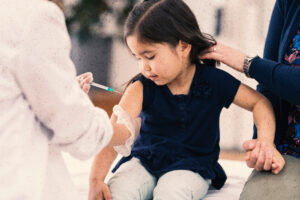Text and Photos by Henrylito D. Tacio
Last September 28, the Philippines joined the international community in observing World Rabies Day with the theme: “One Health, Zero Death.”
“By collaborating and joining forces, engaging communities and committing to sustain dog vaccination, rabies can be eliminated,” said the Geneva-based World Health Organization (WHO) in a statement.
While some parts of Asia – particularly Hong Kong, Japan, Singapore, and Taiwan – are already rabies-free, the disease continues to be a serious threat in the Philippines, where rabies claims 400 people each year.
Filipino health experts, however, fear the real toll may be much higher. They believe the death toll could be higher because of the many deaths that go unreported in remote parts of the country.
In most parts of the country, surveillance of rabies is inadequate and not given priority compared with other infectious diseases like tuberculosis, malaria and more recently, coronavirus disease 2019. In addition, there are few laboratories doing rabies diagnosis.

People almost always contract rabies – a viral infection of the brain – from the saliva of rabid animals. Any warm-blooded animal can be infected, but dogs are by far the commonest source. Dogs are responsible for over 90 percent of rabies deaths in the country.
In Davao City, for instance, most of the rabies cases were coming from dogs, although there some from cats. All in all, a total of 210 rabies-infected dogs were documented.
“The usual pattern of transmission is dog to dog and then from dog to human,” said Dr. Mary Elizabeth Miranda, one of the country’s top experts on rabies.
Children are at greatest risk, because they’re most likely to play with dogs. This has been confirmed by the United Nations health agency, which said that up to 60% of rabies cases occur in people less than 15 years of age.
Though bites are the usual form of transmission, rabies can also be contracted if open wounds or mucous membranes in the eyes, nose and mouth come into contact with saliva from a rabid animal, or if an infected person kisses a partner.

But how can you tell if an animal is rabid? A common clue is a sudden change of behavior; examples: drooling, unprovoked aggression, biting, aimless running and difficulty breathing. Often, the animal does not eat and may fear water. However, some infected animals may become paralyzed or die suddenly without showing signs of illness.
If possible, any dog that bites a person should be confined and observed. “If the dog remains healthy for ten to 14 days, it’s safe to assume it’s rabies-free,” said Dr. Miranda. If the animal does show symptoms, the owner should contact the local health department or a veterinarian immediately and the dog should be humanely put down.
In humans, rabies symptoms may take as short as 14 days or longer than a year. This presents a real problem when treating the disease because by the time symptoms have developed it may be too late to prevent death.
An infected person develops an illness that may include fever, sore throat, stiff muscles, headache, tiredness, restlessness, nausea, and itching or tingling at the site of the bite. As the disease continues its course, the person may become agitated, with periods of calm.
In one out of six cases, there’s hydrophobia – a fear of water. “In this stage, there are forceful, painful muscle spasms of the throat, which expel liquids administered orally,” says Dr. S.N. Madhusudana, associate professor of the Department of Neurovirology at the National Institute of Mental Health and Neuroscience in Bangalore, India.
Once the virus overwhelms the brain and central nervous system, the patient falls into a coma, becomes paralyzed and dies.
What should you do if you’re bitten by a rabid animal? First, attend to the wound right away. “Wash it with plenty of soap and running tap water,” instructs Dr. Madhusudana. “Then apply an antiseptic like iodine or betadine to kill the virus.”
As soon as the wound has been cleaned, seek medical help. Victims must be immunized as soon as possible so that antibodies can develop before the virus incubates. Injection must be done into the bite sites to neutralize the virus.
Those bitten by animals which carry the rabies virus should receive “active” and “passive” immunization, whether the animal turns out to be infected or not. In the active form, a vaccine is injected daily for 14 to 30 days and the patient’s immune system responds by producing antibodies.
When the course is finished, booster doses should be given after 10 and 20 days. In “passive” immunization, rabies immunoglobulin or antiserum should be administered to provide “ready-made” antibodies and another weapon to fight the infection.
Antiserum can either be of human (human rabies immunoglobulin – HRIG) or horse (equine rabies immunoglobulin – ERIG) origin. HRIG, produced from human blood products, is expensive. That’s why ERIG is recommended and used in Asia as a first line of defense. It’s just as safe and effective as the former, but costs a tenth as much.
Serious allergic reactions to the rabies vaccine are rare during the series of five injections. However, some adverse reactions that a person may experience after receiving the vaccine include abdominal pain, itching, muscle aches, dizziness, and inflammation. These adverse reactions, however, can be managed with anti-inflammatory and antipyretic drugs.
“Without timely treatment, rabies infection is 100 percent fatal,” pointed out Dr. Nancy Nazaire-Bermal, head of the clinical research and development of the Novartis Vaccines and Diagnostics. “Rabies is the best example of an illness in which prevention is better than cure, as it is a vaccine-preventable disease.”
Vaccinating pets and livestock can help prevent rabies too. Aside from dogs and cats, the following animals are also carriers of rabies: cattle, horses, monkeys, rabbits, and some rodents (guinea pigs, rats, and mice).
While the government can do this, the public also has a vital role in the educational campaign against rabies. Parents, for their part, must remind their children to NEVER touch or feed stray dogs or cats. – ###
google.com, pub-4264550707369682, DIRECT, f08c47fec0942fa0








